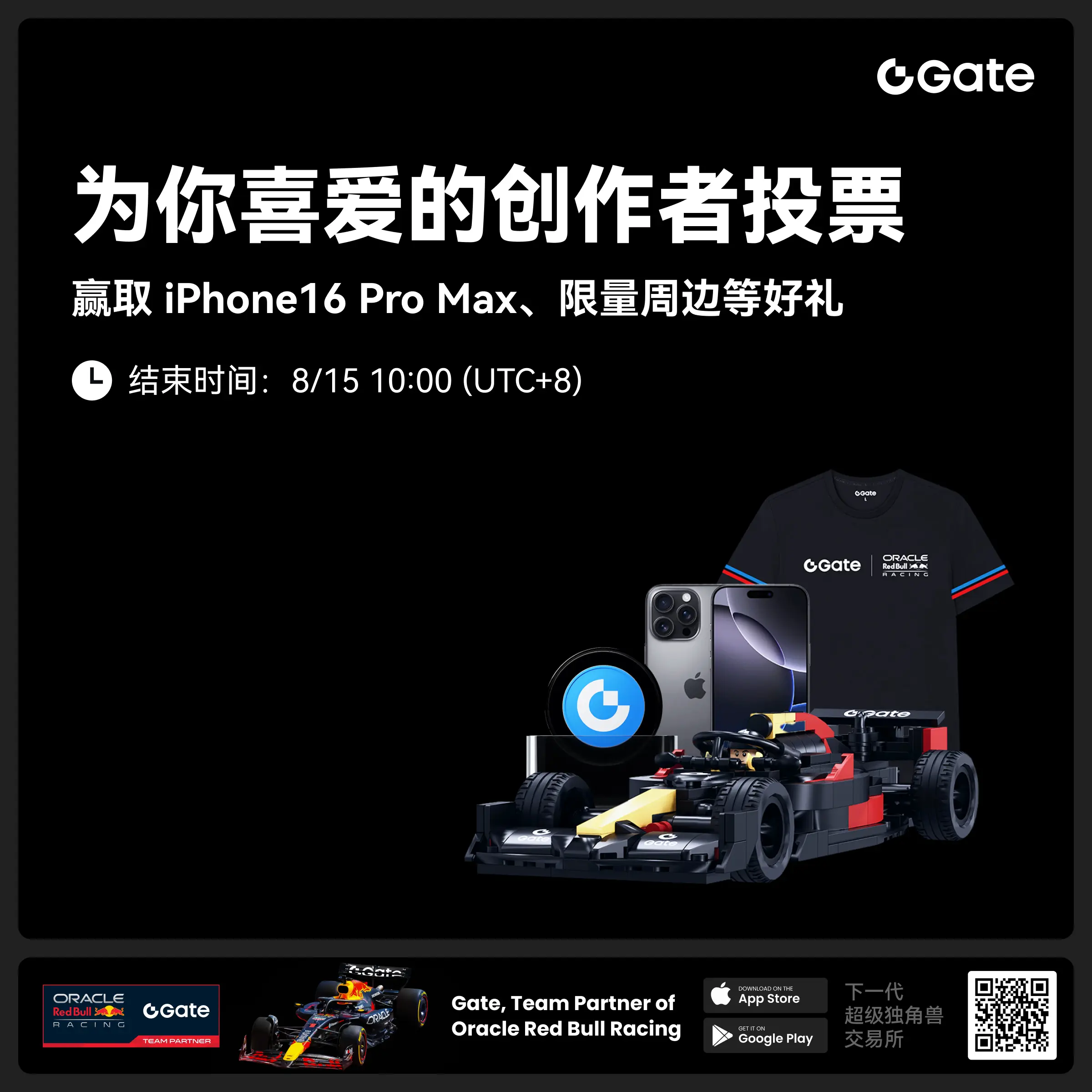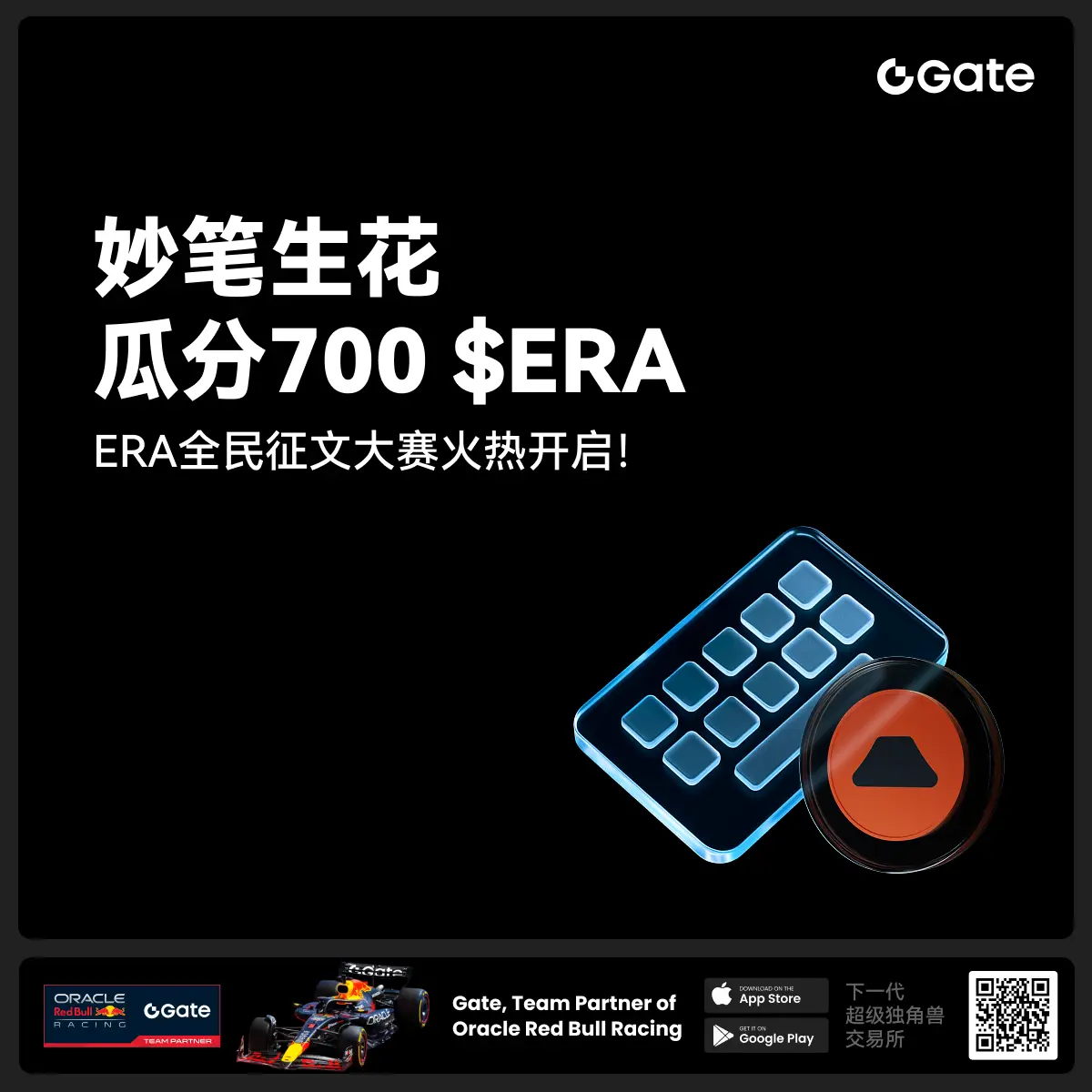- 话题1/3
39k 热度
41k 热度
42k 热度
56k 热度
22k 热度
- 置顶
- 📢 Gate广场 #MBG任务挑战# 发帖赢大奖活动火热开启!
想要瓜分1,000枚MBG?现在就来参与,展示你的洞察与实操,成为MBG推广达人!
💰️ 本期将评选出20位优质发帖用户,每人可轻松获得50枚MBG!
如何参与:
1️⃣ 调研MBG项目
对MBG的基本面、社区治理、发展目标、代币经济模型等方面进行研究,分享你对项目的深度研究。
2️⃣ 参与并分享真实体验
参与MBG相关活动(包括CandyDrop、Launchpool或现货交易),并晒出你的参与截图、收益图或实用教程。可以是收益展示、简明易懂的新手攻略、小窍门,也可以是现货行情点位分析,内容详实优先。
3️⃣ 鼓励带新互动
如果你的帖子吸引到他人参与活动,或者有好友评论“已参与/已交易”,将大幅提升你的获奖概率!
MBG热门活动(帖文需附下列活动链接):
Gate第287期Launchpool:MBG — 质押ETH、MBG即可免费瓜分112,500 MBG,每小时领取奖励!参与攻略见公告:https://www.gate.com/announcements/article/46230
Gate CandyDrop第55期:CandyDrop x MBG — 通过首次交易、交易MBG、邀请好友注册交易即可分187,500 MBG!参与攻略见公告:https://www.gate.com/announcements
- 📢 #Gate广场征文活动第三期# 正式启动!
🎮 本期聚焦:Yooldo Games (ESPORTS)
✍️ 分享独特见解 + 参与互动推广,若同步参与 Gate 第 286 期 Launchpool、CandyDrop 或 Alpha 活动,即可获得任意奖励资格!
💡 内容创作 + 空投参与 = 双重加分,大奖候选人就是你!
💰总奖池:4,464 枚 $ESPORTS
🏆 一等奖(1名):964 枚
🥈 二等奖(5名):每人 400 枚
🥉 三等奖(10名):每人 150 枚
🚀 参与方式:
在 Gate广场发布不少于 300 字的原创文章
添加标签: #Gate广场征文活动第三期#
每篇文章需 ≥3 个互动(点赞 / 评论 / 转发)
发布参与 Launchpool / CandyDrop / Alpha 任一活动的截图,作为获奖资格凭证
同步转发至 X(推特)可增加获奖概率,标签:#GateSquare 👉 https://www.gate.com/questionnaire/6907
🎯 双倍奖励机会:参与第 286 期 Launchpool!
质押 BTC 或 ESPORTS,瓜分 803,571 枚 $ESPORTS,每小时发放
时间:7 月 21 日 20:00 – 7 月 25 日 20:00(UTC+8)
🧠 写作方向建议:
Yooldo
- 🎉Gate 2025 上半年社区盛典:内容达人评选投票火热进行中 🎉
🏆 谁将成为前十位 #Gate广场# 内容达人?
投票现已开启,选出你的心头好
🎁赢取 iPhone 16 Pro Max、限量周边等好礼!
📅投票截止:8 月 15 日 10:00(UTC+8)
立即投票: https://www.gate.com/activities/community-vote
活动详情: https://www.gate.com/announcements/article/45974
- 📢 #Gate广场征文活动第二期# 正式启动!
分享你对 $ERA 项目的独特观点,推广ERA上线活动, 700 $ERA 等你来赢!
💰 奖励:
一等奖(1名): 100枚 $ERA
二等奖(5名): 每人 60 枚 $ERA
三等奖(10名): 每人 30 枚 $ERA
👉 参与方式:
1.在 Gate广场发布你对 ERA 项目的独到见解贴文
2.在贴文中添加标签: #Gate广场征文活动第二期# ,贴文字数不低于300字
3.将你的文章或观点同步到X,加上标签:Gate Square 和 ERA
4.征文内容涵盖但不限于以下创作方向:
ERA 项目亮点:作为区块链基础设施公司,ERA 拥有哪些核心优势?
ERA 代币经济模型:如何保障代币的长期价值及生态可持续发展?
参与并推广 Gate x Caldera (ERA) 生态周活动。点击查看活动详情:https://www.gate.com/announcements/article/46169。
欢迎围绕上述主题,或从其他独特视角提出您的见解与建议。
⚠️ 活动要求:
原创内容,至少 300 字, 重复或抄袭内容将被淘汰。
不得使用 #Gate广场征文活动第二期# 和 #ERA# 以外的任何标签。
每篇文章必须获得 至少3个互动,否则无法获得奖励
鼓励图文并茂、深度分析,观点独到。
⏰ 活动时间:2025年7月20日 17
- 📢 ETH冲击4800?我有话说!快来“Gate广场”秀操作,0.1 ETH大奖等你拿!
牛市预言家,可能下一个就是你!想让你的观点成为广场热搜、赢下ETH大奖?现在就是机会!
💰️ 广场5位优质发帖用户+X浏览量前5发帖用户,瓜分0.1 ETH!
🎮 活动怎么玩,0门槛瓜分ETH!
1.话题不服来辩!
带 #ETH冲击4800# 和 #ETH# 在 广场 或 K线ETH下 围绕一下主题展开讨论:
-ETH是否有望突破4800?
-你看好ETH的原因是什么?
-你的ETH持仓策略是?
-ETH能否引领下一轮牛市?
2. X平台同步嗨
在X平台发帖讨论,记得带 #GateSquare# 和 #ETH冲击4800# 标签!
把你X返链接提交以下表单以瓜分大奖:https://www.gate.com/questionnaire/6896
✨发帖要求:
-内容须原创,字数不少于100字,且带活动指定标签
-配图、行情截图、分析看法加分,图文并茂更易精选
-禁止AI写手和灌水刷屏,一旦发现取消奖励资格
-观点鲜明、逻辑清晰,越有料越好!
关注ETH风向,创造观点价值,从广场发帖开始!下一个牛市“预言家”,可能就是你!🦾🏆
⏰ 活动时间:2025年7月18日 16:00 - 2025年7月28日 23:59(UTC+8)
【立即发帖】 展现你的真知灼见,赢取属于你的ETH大奖!
为什么说加密资本市场仍处于制造代币的阶段?
撰文:Blockworks
编译:白水,金色财经
商业的伪造之处在于投机。商人总是以收益换取价值,从而发挥有益的作用。
——安德鲁·卡内基
当被问及新成立的联邦钢铁公司(Federal Steel)带来的竞争威胁时,安德鲁·卡内基(Andrew Carnegie)嘲笑道,该公司真正的专长是「制造股票凭证」,而不是钢铁。
这番不屑一顾的评论象征着 19 世纪 90 年代工业「信托」股票的繁荣,卡内基认为这些股票大多与商业无关,而与投机息息相关。
当然也有例外——在石油、糖和烟草等领域成立的大型垄断信托,不出所料地被证明是不错的投资。
但也有一些在绳索、墙纸和棺材等领域成立的信托,本质上只是股票推销计划,并非如此。
1893 年,国家绳索公司(National Cordage Company,即「绳索信托」)的倒闭甚至引发了一场广泛的金融恐慌,导致许多其他同样从事「制造股票凭证」业务的信托倒闭。
这一结果或许对加密货币行业是一个警示,因为加密货币行业仍然以制造代币(而非价值)而闻名。
绝大多数代币都没有任何实际用途——而那些真正有用的代币也大多只是代表着交易无用代币的不同方式。
加密货币市场仍然高度自指,但人们一直希望这种情况会随着时间的推移而改变:建立一个新的金融体系,资产和投资者就会涌入。
如果真是这样,感觉他们随时都会到来——现在的技术已经足够成熟,区块空间足够便宜且充足,而且美国证券交易委员会(SEC)也已放宽监管。
有迹象表明,这一切可能正在发生,这令人充满希望。
例如,现实世界资产在链上转移的现象显著增长——这主要归功于贝莱德代币化货币市场基金 BUIDL 的成功(该产品在很多方面都真正优于其链下同类产品)。
稳定币资产也呈现上涨趋势,而且可能才刚刚起步:万事达卡今早宣布将使用稳定币进行支付,这可能最终将加密货币带入非加密货币大众的视野。
花旗银行最近的一份报告预测,到 2030 年,稳定币资产管理规模将从目前的 2400 亿美元飙升至 3.5 万亿美元。
(注:我算了一下,距离 2030 年还有四年半的时间。我知道这很令人震惊,但这是事实。)
如果链上代币化资产达到 3.5 万亿美元,那么可投资资产也会随之而来。
例如,我最近在链上购买了两张宝可梦卡牌和一瓶威士忌,仅仅是因为我在链上有一些闲钱,而且加密货币让购买宝可梦卡牌和威士忌变得非常容易。
如此便捷,以至于我现在认为这两样东西都是可投资资产——无需像以前那样收货或储存收藏品,这改变了游戏规则。
投资卡牌和威士忌也比在 BUIDL 上赚取 4% 或在 memecoin 上亏损 100% 更有趣。
希望加密货币投资者能很快拥有更多选择。
Kyle Samani 甚至相信未来会有更多选择:「几乎所有资产都将在像 Solana 这样本质上全球化且无需许可的系统上交易,」他在最近一份关于加密货币资本市场未来的报告中预测道。
如果是这样,那当然包括股票和债券,但更有趣的是,也包括全新类型的加密原生资产。
目前,除了目前区块链和 DeFi 代币的发行——这些代币几乎都以自我指涉的方式用于加密货币交易——之外,这些未来将会是什么样子,仍然难以想象。
但现在区块空间如此廉价且充足,人们正在尝试新事物。
例如,Time.fun 是一个将人们时间代币化的实验;Zora 是一个使用「内容币」来展示和优先排序信息的实验;TRUMP,一个「名人币」,是一个将薪酬代币化的实验;Story Protocol 是一个可编程、代币化知识产权的实验;Believe App 是一个将 X 条帖子转换成 memecoin(或「创意币」)的实验,这些 memecoin 可以为它们所代表的商业创意提供资金。
像大多数实验一样,这些实验可能会失败。
但如果加密资本市场继续像这样把意大利面条扔到墙上,一些新的、有趣的东西最终应该会坚持下来。
重要的是,它们也可能并非全是加密货币。
华尔街最近尝试的越来越少:Tomasz Tunguz 指出,自 2018 年以来,只有两家收入低于 1 亿美元的公司在美国 IPO。
未能为投资者提供新的投资机会,至少部分原因是 IPO 流程成本过高:Tunguz 估计,一家营收 1 亿美元的公司在美国证券交易所上市的成本高达 2600 万美元。
这是一种成本高昂的融资方式。
相比之下,通过加密货币融资几乎便宜到无可匹敌。
在某些情况下,确实如此:Zora 发行的代币「只是为了好玩」,这意味着 Zora 无需出售股权即可筹集股本——这真是一个只有在加密货币领域才能实现的奇特伎俩。
到目前为止,这对加密货币投资者来说效果并不好。对于大多数加密货币代币的投资者来说,回报相当糟糕。
当然,很多人通过加密货币致富,但他们并非通过创造或投资有用的东西。
相反,他们主要通过制造代币来致富。
安德鲁·卡内基对此并不感冒——他认为,企业的成功应该源于「以收益换取价值」,而不仅仅是提供新的投机机会。
但他或许对加密货币市场抱有同情,因为在他那个时代,股票市场也并非十分严肃——直到他将自己的卡内基钢铁公司并入美国钢铁公司,创造了第一支现代股票。
美国钢铁公司正是卡内基所嘲笑的那种金融工程的产物。
但它也是第一家市值达十亿美元的公司,第一家发布现代财务报表的公司,并且可以说是第一家真正实现公有制的公司。
加密货币资本市场仍处于制造代币的阶段。
但它们的美国钢铁时刻或许——最终——即将到来。